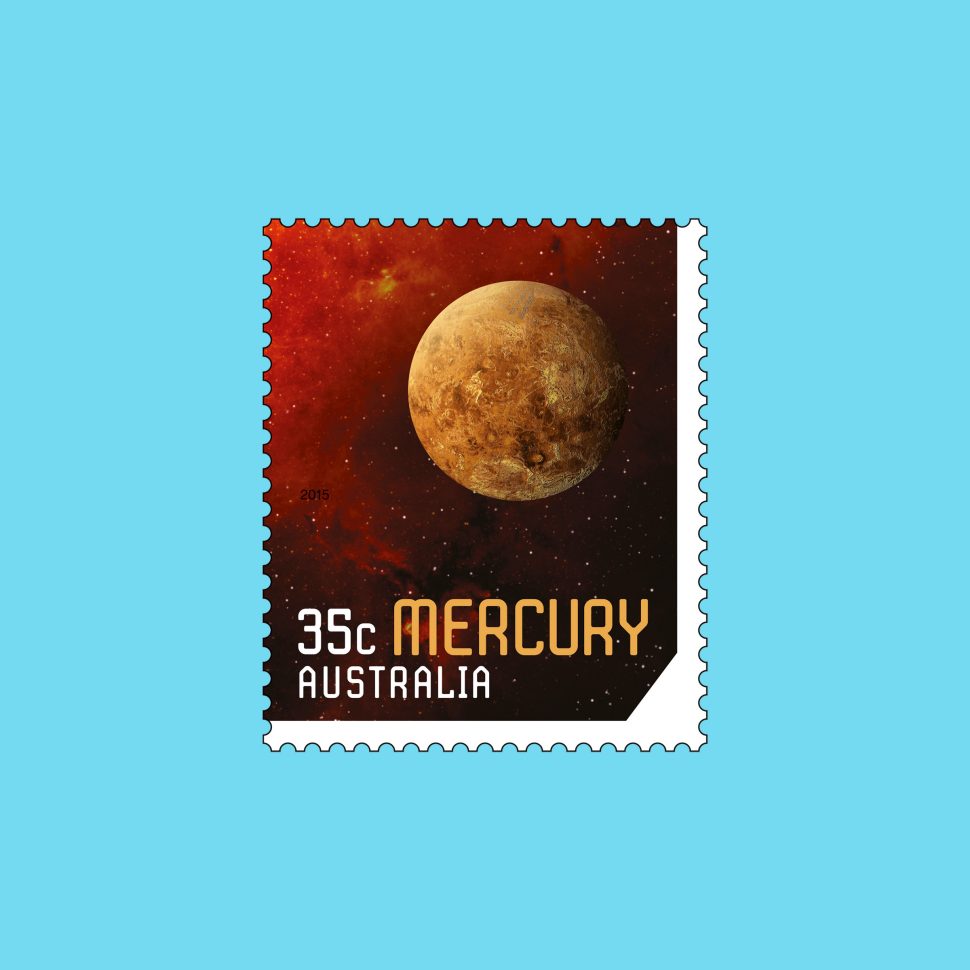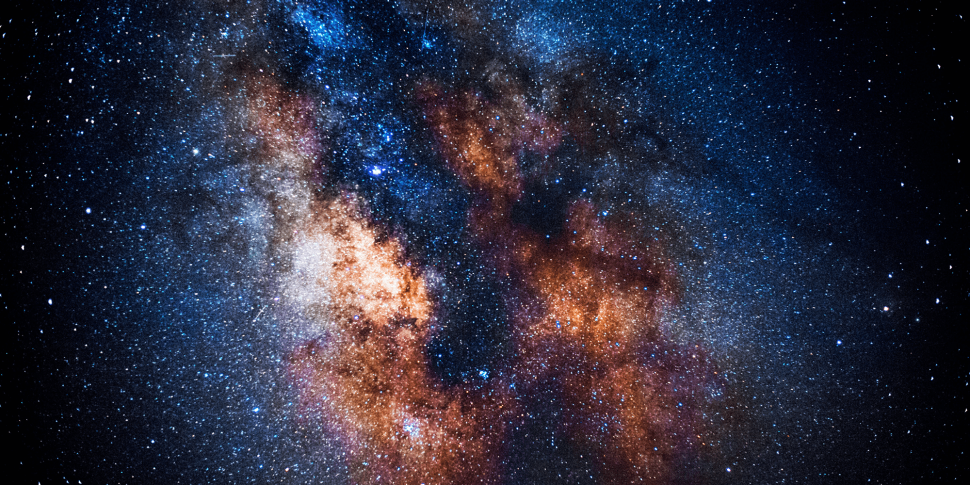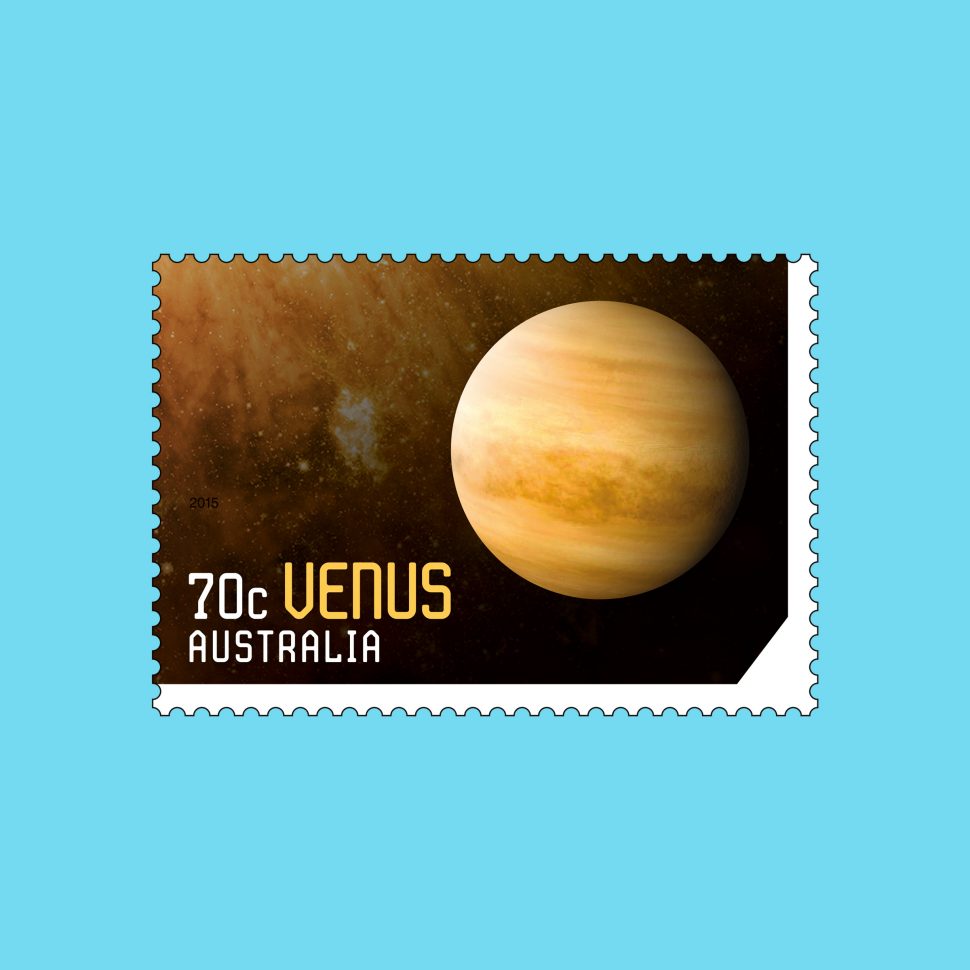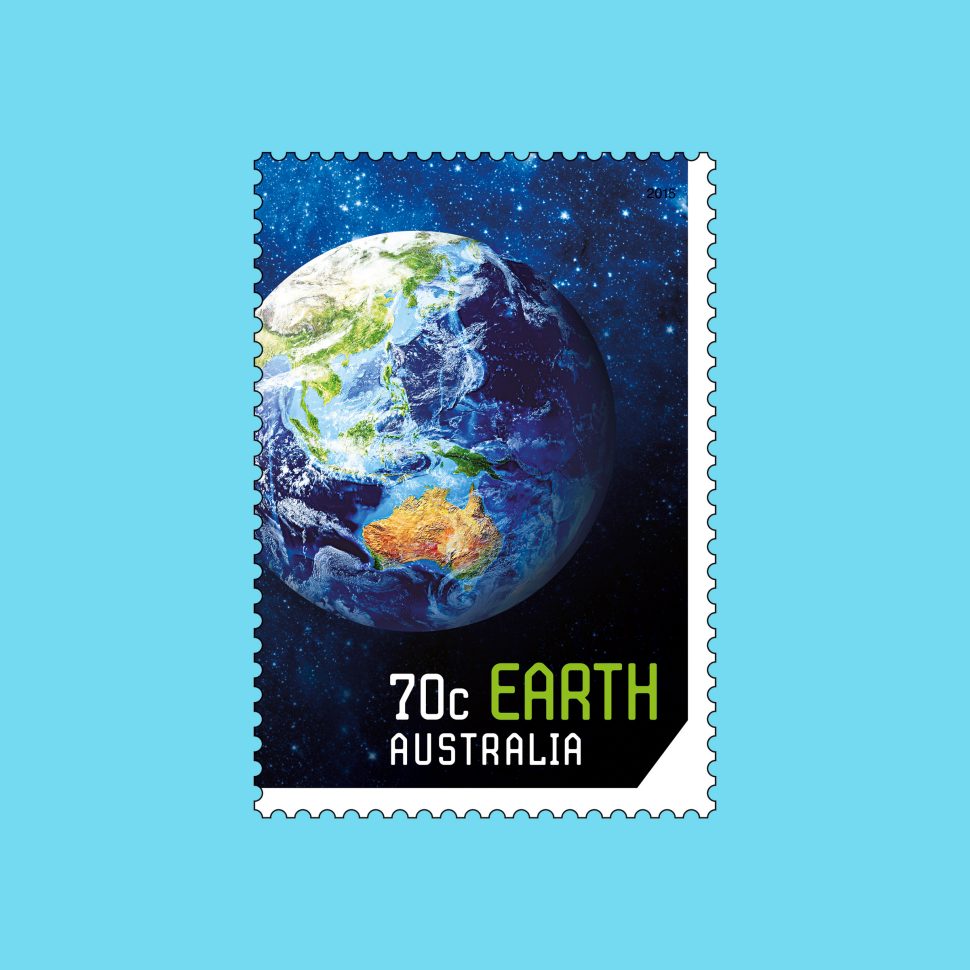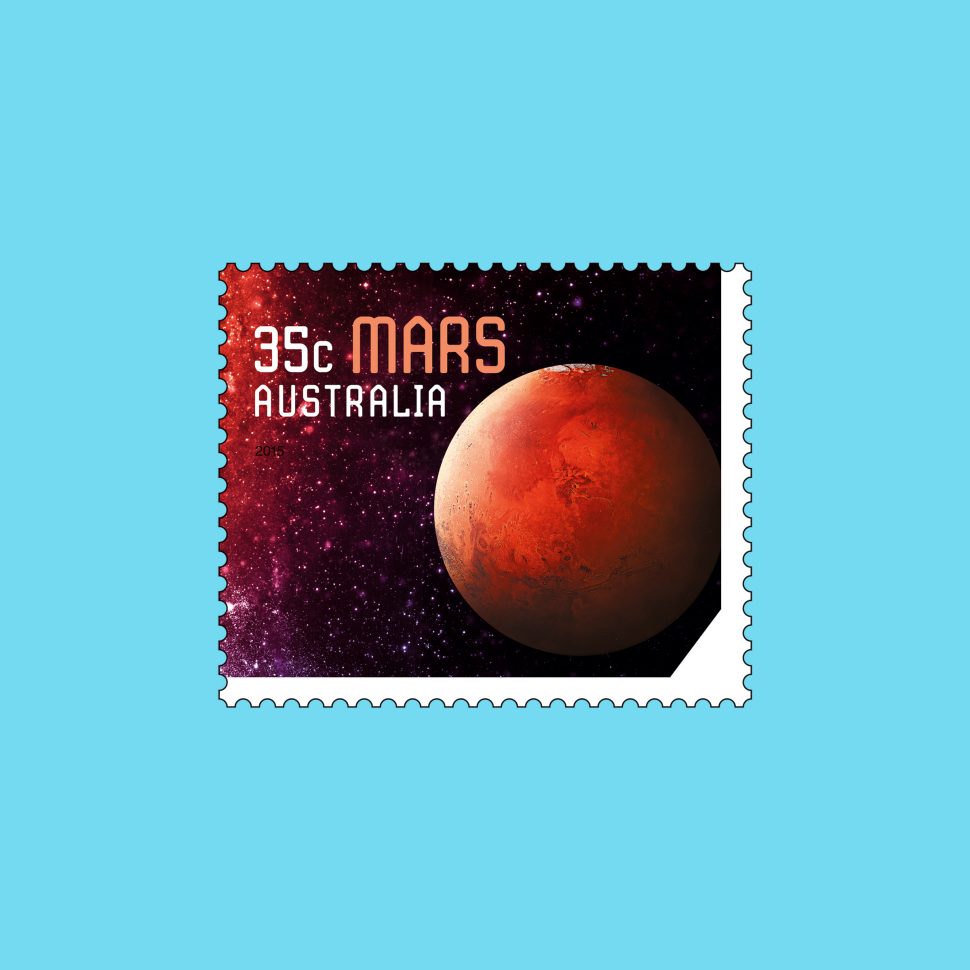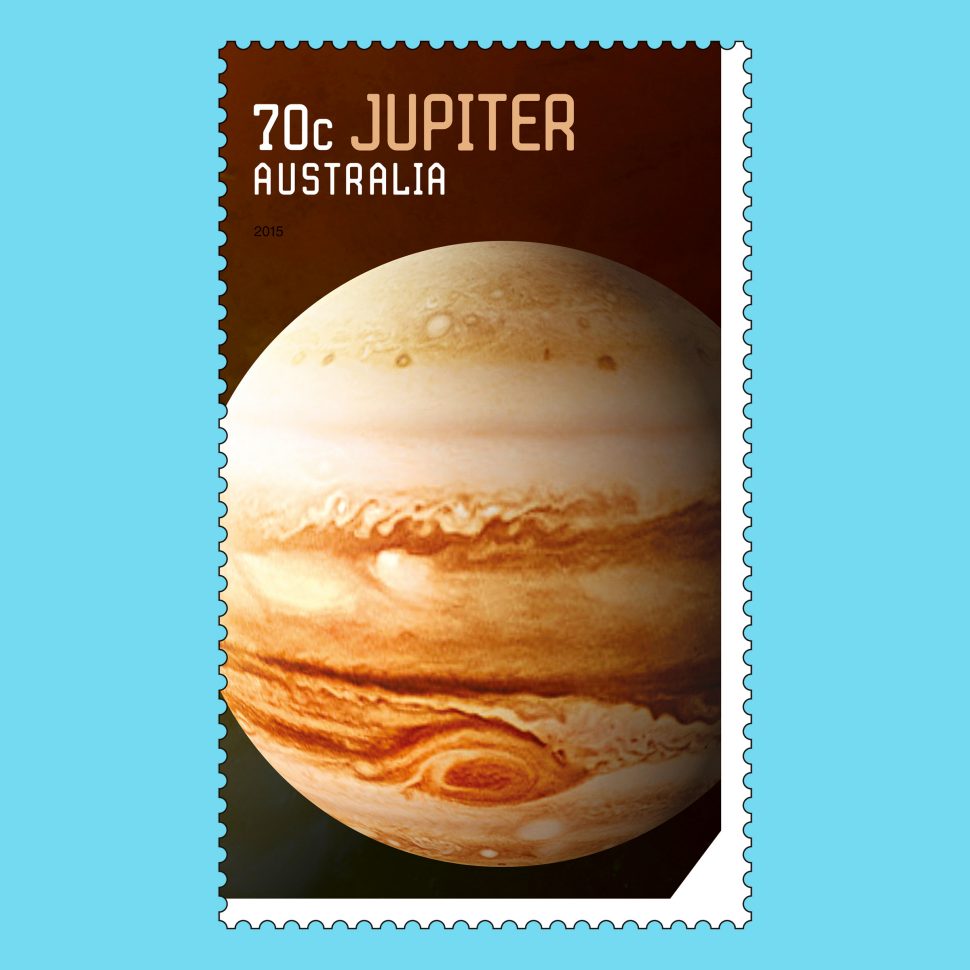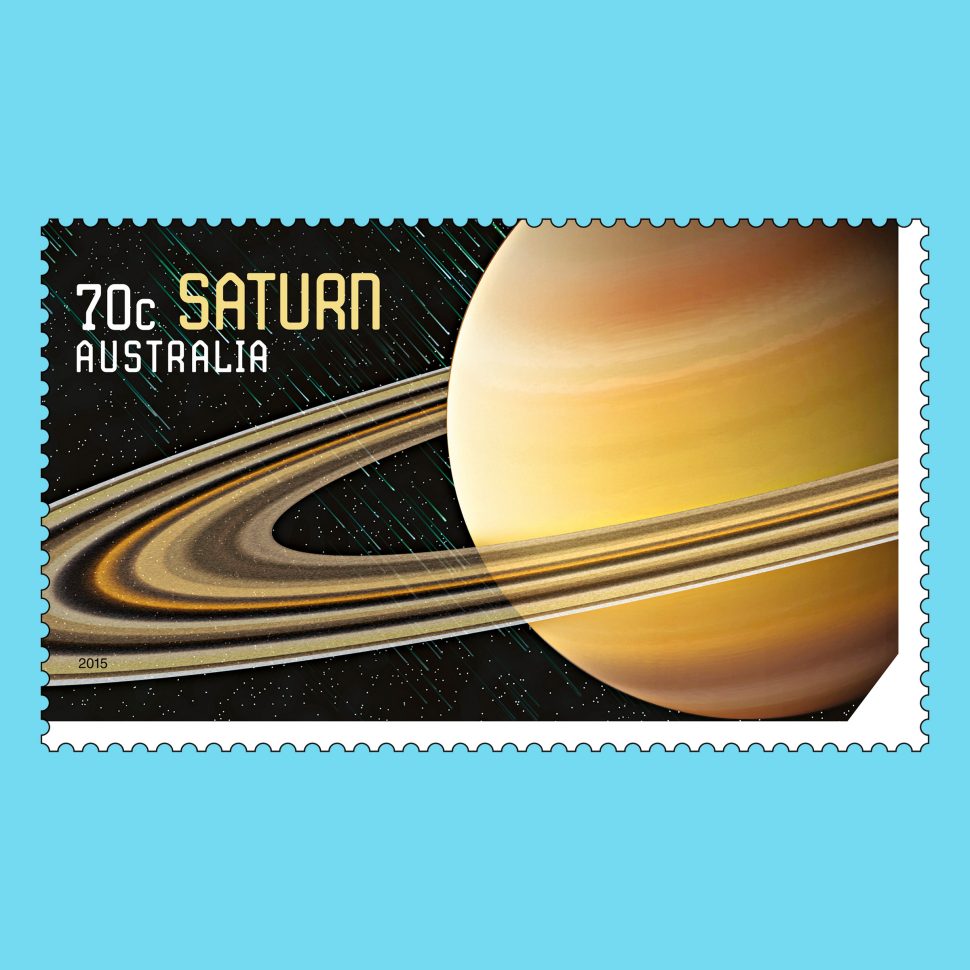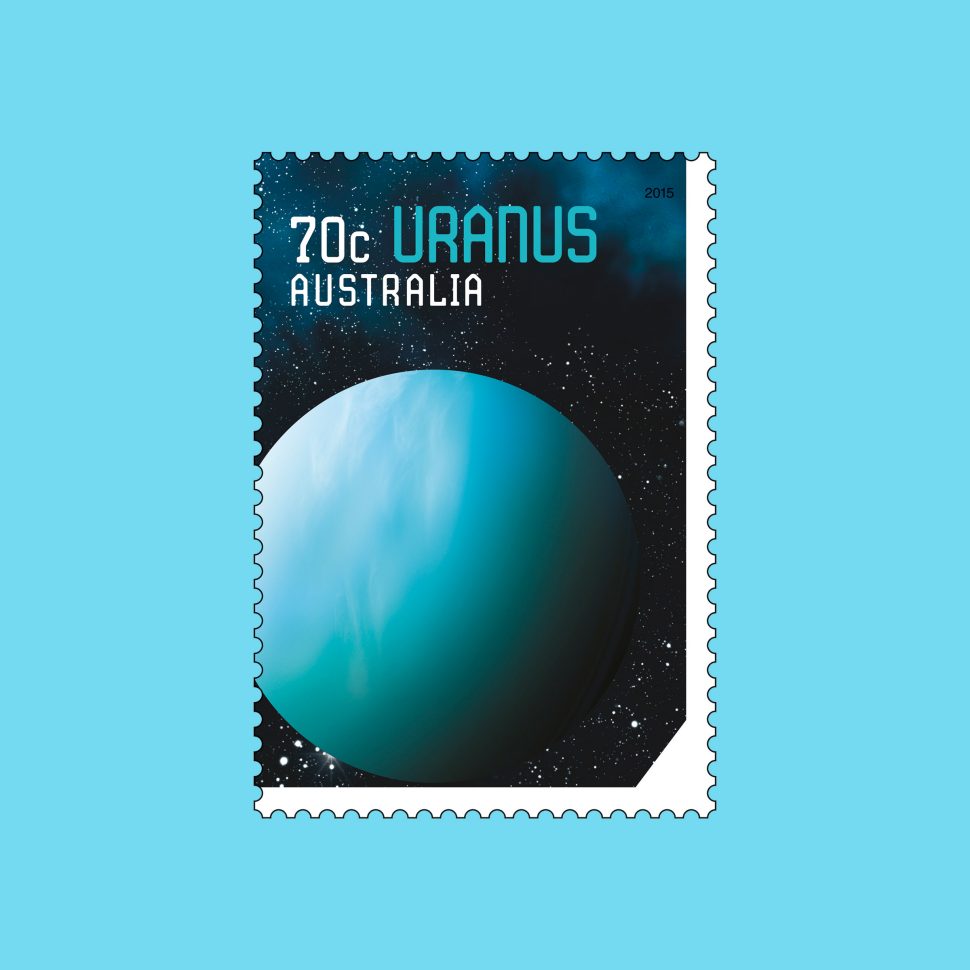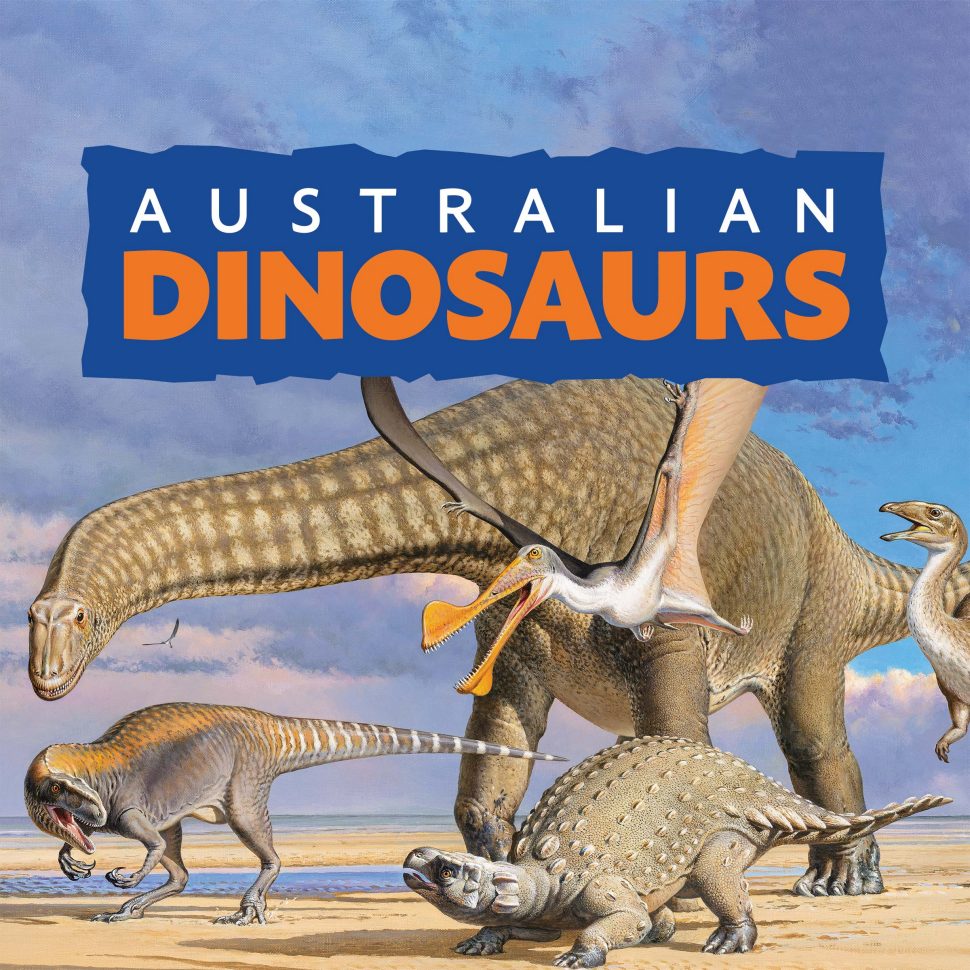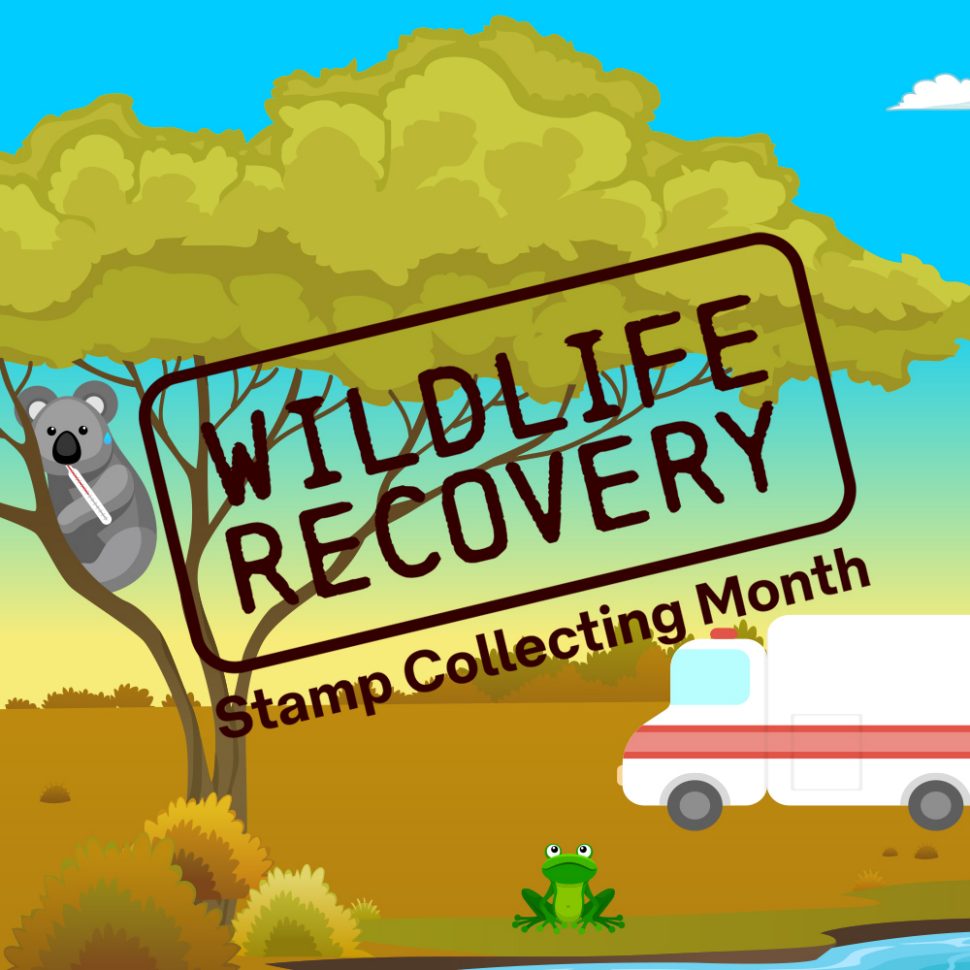Neptune, the outermost of the major planets, was discovered by telescope (in 1846, by Urbain Le Verrier and Johann Galle) as the result of mathematical calculations. It is a little smaller than Uranus (equatorial diameter 49,528km) and similar in composition, but its atmosphere is wracked by fierce winds (measured at travelling 600m per second) and giant storms.
One of these massive storms was the Great Dark Spot, first observed in 1989, and lasting for five more years. Neptune takes 164.8 years to complete an orbit of the Sun, but its day lasts just over 16 hours. Neptune has a thin system of five rings, composed of ice particles and dust grains, and 14 known moons. Triton, the largest moon, has geysers spewing out nitrogen and dust from below the surface.
Pluto was also discovered mathematically, like Neptune, in 1930 (by Clyde Tombaugh). It was once considered a planet, but is now categorised as a dwarf planet. It is included on the Neptune stamp as a representative of the smaller bodies in our solar system. These include dwarf planets, asteroids, comets and the icy bodies of the Kuiper Belt and the Oort Cloud, at the outer fringes of the solar system. Plto has an estimated diameter of 2,370km and has five known moons.
Dwarf planet Pluto, the largest known object in the Kuiper Belt object, was finally explored in 2015. Amazing images of Pluto and its large moon Charon have revealed two very different icy worlds, with complex and unexpected geology, demonstrating that we still have much to learn about our solar system.
